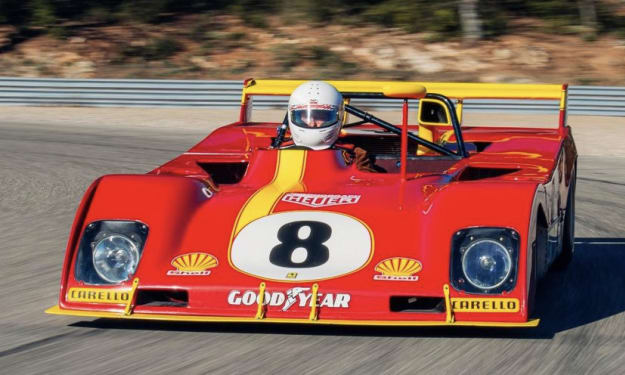
The Mazda 787B was a prototype sports car that competed in the World Sportscar Championship and the 24 Hours of Le Mans in the early 1990s. It was notable for being the first and only Japanese car to win the 24 Hours of Le Mans, one of the most prestigious endurance races in the world.
The Mazda 787B was powered by a four-rotor Wankel engine that produced around 700 horsepower. The car featured an aluminum monocoque chassis, carbon fiber bodywork, and advanced aerodynamics that gave it excellent handling and performance on the track.
The Mazda 787B made its debut at the 1990 24 Hours of Le Mans, but it retired early due to engine problems. However, the car bounced back in 1991, with a team of four Japanese drivers (Johnny Herbert, Volker Weidler, Bertrand Gachot, and Takashi Yorino) driving the car to victory at Le Mans. This was a historic moment, as it was the first time a Japanese car had won the race, and it also marked the first and only win for a car powered by a Wankel engine.
The Mazda 787B continued to race in the World Sportscar Championship for several more years, but it was eventually retired in 1992 due to changes in the regulations. Today, the car is considered a classic racing car, and it is highly sought after by collectors.
What other notable features did the Mazda 787B have?
In addition to its powerful Wankel engine and advanced aerodynamics, the Mazda 787B had several other notable features that helped it to be successful on the track. Here are a few:
- Rotary engine: The Mazda 787B was powered by a four-rotor Wankel engine, which is a type of engine that uses rotors instead of pistons to generate power. The Wankel engine is known for its high power output and smooth operation, and it was a key factor in the 787B's success.
- Carbon fiber brakes: The Mazda 787B was one of the first cars to use carbon fiber brakes, which are lighter and more durable than traditional steel brakes. This gave the car better stopping power and reduced brake fade during long races like the 24 Hours of Le Mans.
- Active suspension: The Mazda 787B had an advanced active suspension system that used hydraulic actuators to adjust the ride height and stiffness of the suspension in real-time. This allowed the car to maintain optimal handling and performance on different types of tracks.
- Driver aids: The Mazda 787B had several driver aids, including traction control and anti-lock brakes. These features helped the drivers to maintain control of the car during high-speed maneuvers and in wet or slippery conditions.
All of these features, along with the car's lightweight construction and excellent handling, made the Mazda 787B one of the most advanced and successful racing cars of its era. The car's historic win at the 24 Hours of Le Mans in 1991 is a testament to its capabilities and the skill of its drivers.
What other races did the Mazda 787B participate in?
The Mazda 787B competed in several races during its racing career in the early 1990s. Here are some of the notable races that the car participated in:
- 1990, 24 Hours of Le Mans: The Mazda 787B made its debut at the 1990 24 Hours of Le Mans, but it retired early due to engine problems.
- 1991, 24 Hours of Le Mans: The Mazda 787B won the 1991 24 Hours of Le Mans, making history as the first and only Japanese car to win the race.
- 1991, All Japan Sports Prototype Championship: The Mazda 787B won three out of six races in the 1991 All Japan Sports Prototype Championship, finishing second in the overall standings.
- 1991, 430 km of Nürburgring: The Mazda 787B won the 430 km of Nürburgring race in 1991, beating out several other top-tier prototype sports cars.
- 1992, 12 Hours of Sebring: The Mazda 787B finished in second place at the 1992 12 Hours of Sebring, behind a Porsche 962.
These races, along with several others, helped to cement the Mazda 787B's reputation as one of the most successful prototype sports cars of its era. The car's historic win at the 24 Hours of Le Mans in 1991 is legendary, and it remains one of the most memorable moments in the history of endurance racing.
If you’re interested you should read about Ferrari 312 PB
About the Creator
Car Community
high quality car stories , everything you should know about every car ever made.






Comments
There are no comments for this story
Be the first to respond and start the conversation.